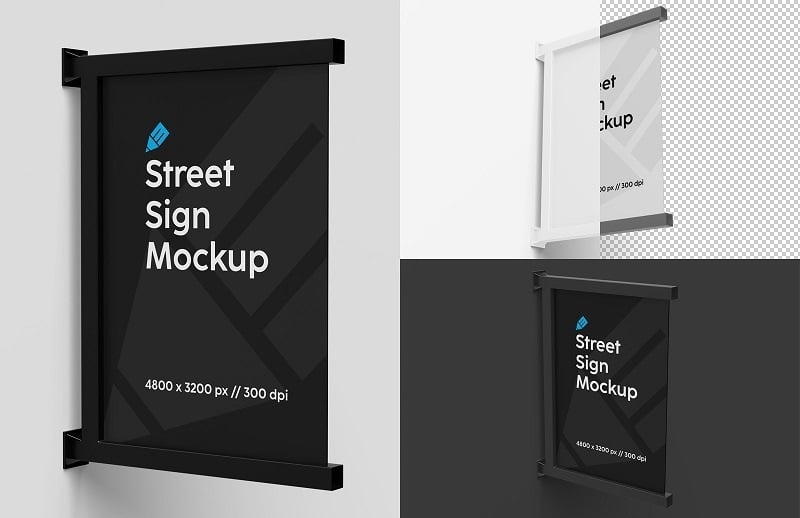How much is a custom sign for a business?
 The cost of a custom shop signboard design for a business can vary widely depending on various factors such as the size, materials, design complexity, location, and the specific requirements of the business.
The cost of a custom shop signboard design for a business can vary widely depending on various factors such as the size, materials, design complexity, location, and the specific requirements of the business.
As a rough estimate, a basic custom business sign made of materials like vinyl or plastic, with a simple design and standard dimensions, may start at around $200 to $500. However, larger signs, signs made of higher-quality materials such as metal or wood, signs with more intricate designs, or signs with special features like backlighting or digital displays, can cost significantly more.
For medium to large-sized custom business signs, the cost can range from $1,000 to $10,000 or more. Large or complex signs, such as those used for storefronts or outdoor advertising, can be even more expensive, ranging from $10,000 to tens of thousands of dollars, or more, depending on the specifications and design.
It’s important to note that these are rough estimates and the actual cost of a custom sign for a business will depend on a wide range of factors. It’s best to consult with a professional sign maker or sign company to get an accurate quote based on your specific needs and requirements.
How do I create a sign for my business?
 Creating signs design for your business involves several steps. Here’s a step-by-step guide to help you:
Creating signs design for your business involves several steps. Here’s a step-by-step guide to help you:- Determine your sign’s purpose: Consider what you want your sign to achieve. Is it for branding, advertising, or providing information? Understanding the purpose of your sign will help you make design decisions.
- Define your message: Decide on the key message you want to convey with your sign. It should be concise and clear. For example, if you’re a coffee shop, your message could be “Freshly brewed coffee” or “Best coffee in town.”
- Choose your sign type: There are various types of signs, such as banners, yard signs, window decals, neon signs, and more. Choose the type of sign that aligns with your business and location.
- Select a design style: Consider the overall aesthetic of your business and choose a design style that complements it. It could be modern, vintage, minimalist, or any other style that resonates with your brand.
- Decide on colors and fonts: Choose colors and fonts that are consistent with your brand’s visual identity. Consider legibility, visibility from a distance, and how they will stand out against the background of your sign.
- Include your branding elements: Your sign should include your business name, logo, and other branding elements that help customers identify your business.
- Keep it simple and clear: Avoid cluttering your sign with too much information or complicated graphics. Keep it simple and easy to read, especially from a distance.
- Choose appropriate sizing: Consider the location and visibility of your sign when determining the size. A sign on a busy road may need to be larger than a sign inside a store.
- Find a reputable sign maker: Look for a professional sign maker who can bring your design to life. Get quotes and compare their services, quality, and pricing to make an informed decision.
- Follow local sign regulations: Check your local regulations for signage, including size, placement, and other restrictions. Ensure that your sign complies with local laws and regulations.
Sign design for your business requires careful planning and attention to detail. By following these steps, you can design a sign that effectively represents your business and attracts customers.
How do I create an online sign?
 Creating online sign designs can be done using a variety of tools and methods depending on your specific needs and requirements. Here are some general steps you can follow:
Creating online sign designs can be done using a variety of tools and methods depending on your specific needs and requirements. Here are some general steps you can follow:- Decide on the type of online sign you want to create: There are various types of online signs, such as banners, posters, digital billboards, or interactive signs. Consider the purpose of your sign, the content you want to display, and the platform or website where you want to host the sign.
- Choose a design tool: There are many online design tools that you can use to create an online sign, even if you don’t have extensive design skills. Some popular options include Canva, Adobe Spark, Piktochart, and Google Slides. These tools offer pre-designed templates, drag-and-drop functionality, and customization options to create professional-looking signs.
- Select the dimensions and format: Determine the size and format of your online sign based on where you plan to display it. Consider factors such as aspect ratio, resolution, and compatibility with the hosting platform. For example, if you’re creating a banner for a website, you may need to consider the dimensions and format that fit well within the website layout.
- Create your sign content: Use the design tool of your choice to create the content for your online sign. This may include text, images, logos, and other visual elements. Keep in mind the intended audience, message, and branding guidelines, if applicable.
- Customize the appearance: Use the design tools to customize the appearance of your sign, such as choosing fonts, colors, backgrounds, and other visual elements that align with your branding or message.
- Save and export your sign: Once you’re satisfied with your online sign design, save your work and export it in the appropriate format for online use. Common file formats for online signs include JPEG, PNG, GIF, or HTML5 for interactive signs.
- Host your sign online: Upload your sign to a web hosting platform or website where you want it to be displayed. This may involve embedding the sign code into a webpage, uploading the image file to a file hosting service, or using a specific platform or software for digital signage.
- Test and publish your sign: Make sure to test your online sign on different devices and browsers to ensure it displays correctly and functions as intended. Once you’re satisfied with the results, publish your sign to make it live and accessible to your intended audience.
Remember to always follow relevant laws, regulations, and copyright guidelines when creating an online sign, and be mindful of the privacy and accessibility considerations for your audience.
How do i create a shop signage?
 Creating signage design involves several steps. Here’s a step-by-step guide on how to create shop signage:
Creating signage design involves several steps. Here’s a step-by-step guide on how to create shop signage:
- Determine the Purpose and Location: Decide on the purpose of your shop signage. Is it for branding, advertising, or providing information? Also, consider the location of the signage. Is it going to be displayed indoors or outdoors? The purpose and location will influence the design and materials used for your shop signage.
- Measure and Plan: Measure the area where the signage will be installed and plan the size, layout, and orientation of the signage accordingly. Consider factors such as visibility, readability, and aesthetics when planning the layout.
- Choose the Material: Select a suitable material for your shop signage based on the location and purpose. Common materials used for shop signage include vinyl banners, acrylic sheets, metal, wood, and PVC. Consider factors such as durability, weather resistance, and cost when choosing the material.
- Design the Signage: Create a design for your shop signage that reflects your brand identity, conveys your message clearly, and is visually appealing. Use design software such as Adobe Illustrator or Canva to create your design. Consider factors such as font style, color, graphics, and images in your design. Make sure the design is readable from a distance and catches the attention of passersby.
- Add Relevant Information: Include relevant information in your shop signage, such as your shop name, logo, contact details, opening hours, and any other important information that is relevant to your business. Keep the information concise and easy to read.
- Get a Quote from a Signage Provider: Once you have finalized your design, get a quote from a signage provider or print shop for the production and installation of your shop signage. Consider factors such as cost, production time, and installation requirements when choosing a signage provider.
- Review and Approve the Proof: Before production begins, review and approve a proof of your shop signage provided by the signage provider. Make sure all the information, design elements, and layout are accurate and as per your requirements.
- Production and Installation: Once the proof is approved, the signage provider will produce your shop signage according to the agreed-upon specifications. After production, the signage will be installed at the designated location, either by the signage provider or by a professional installer.
- Regular Maintenance: Keep your shop signage well-maintained by regularly cleaning and inspecting it for any damage or wear and tear. Replace or repair any damaged or faded signage to ensure it continues to effectively represent your shop.
By following these steps, you can create shop signage that is visually appealing, conveys your message effectively, and helps attract customers to your shop. It’s always a good idea to work with a professional signage provider to ensure high-quality production and installation.
How do I make a sign template?
 Creating a business signage template can be a simple process. Here are some steps to guide you:
Creating a business signage template can be a simple process. Here are some steps to guide you:- Decide on the purpose of your sign: Consider what you want your sign to communicate and who your target audience is. This will help you determine the content and design elements of your sign template.
- Choose a design software: You can use various design software tools such as Adobe Photoshop, Adobe Illustrator, Microsoft PowerPoint, or even free online design tools like Canva or Google Slides. Select a tool that you are familiar with and comfortable using.
- Select the dimensions of your sign: Determine the size and orientation of your sign. Common sign sizes include letter-size (8.5×11 inches), poster-size (18×24 inches), or larger for outdoor signs. Ensure that your design software is set up with the appropriate dimensions.
- Create your design elements: Add text, images, and other design elements to your sign template. Use bold and clear fonts that are easy to read from a distance. Choose images or graphics that are relevant to your message and align with your brand or communication objective.
- Customize your sign template: Consider adding areas for customization, such as blank spaces for writing dates or times, or editable fields for adding names or other specific information. This will allow you to reuse the same template for different purposes.
- Review and revise: Double-check your sign template for any errors, misspellings, or inconsistencies. Make sure all the information is accurate and up-to-date. Revise your design as needed to ensure it meets your desired look and feel.
- Save your sign template: Once you are satisfied with your sign template, save it in a format that is easy to edit and print, such as a PDF or a PowerPoint slide. This will allow you to make future edits or print multiple copies of your sign as needed.
With these steps, you can create a sign template that can be used for various purposes, such as posters, banners, flyers, or other types of signs. Remember to follow any applicable guidelines or regulations for signage in your area, such as local laws, building codes, or accessibility requirements.
Is there an app to design a sign?
 There are several apps and software tools available that can help you design signs. Here are a few options:
There are several apps and software tools available that can help you design signs. Here are a few options:- Adobe Illustrator: Adobe Illustrator is a professional graphic design software that allows you to create vector-based designs, including signs. It offers a wide range of tools for creating custom shapes, adding text, and applying various effects. It is widely used by graphic designers and sign makers for creating high-quality sign designs.
- Canva: Canva is a popular online design tool that offers a user-friendly interface and a wide variety of pre-designed templates, including sign templates. It allows you to customize sign templates by adding text, images, and other design elements. Canva is a great option for beginners or those who need a quick and easy way to create signs.
- SketchUp: SketchUp is a 3D modeling software that can be used to create sign designs in a three-dimensional space. It offers a wide range of tools for creating 3D shapes, adding textures, and visualizing sign designs in a realistic way. SketchUp is commonly used by sign makers who need to create complex or three-dimensional signs.
- SignSmith Studio: SignSmith Studio is a specialized software for sign design and production. It offers a range of tools and features specific to the sign-making industry, such as pre-designed sign templates, vector editing, sign production tools, and sign pricing calculators. SignSmith Studio is tailored for professional sign makers and offers advanced features for creating signs with precision.
- VinylMaster Pro: VinylMaster Pro is another specialized software for sign design and production, specifically for vinyl signs. It offers a range of tools for creating vinyl sign designs, such as vector editing, text effects, and vinyl cutting tools. VinylMaster Pro is commonly used by sign makers who work with vinyl cutting machines for creating vinyl signs.
These are just a few examples of the many apps and software tools available for designing signs. The right app or software for you will depend on your specific needs, level of expertise, and budget.
Frequently Asked Questions (FAQs)
Q: How important is a shop signboard for a small business? A: Extremely important! A well-designed shop signboard can significantly impact a small business’s visibility and attract potential customers.
Q: What font size is ideal for a shop signboard? A: The ideal font size depends on factors such as viewing distance and surrounding distractions. Generally, a bold and legible font is recommended.
Q: Can I design my shop signboard online? A: Absolutely! Many online tools and design platforms allow you to create custom shop signboards. Ensure you follow the guidelines for printing and materials.
Q: Are there any regulations for shop signboard designs? A: Yes, local regulations may govern the size, placement, and illumination of shop signboards. It’s crucial to check and comply with these regulations to avoid any legal issues.
Q: What role does color play in a shop signboard? A: Color can evoke specific emotions and influence customer perceptions. Choose colors that align with your brand and appeal to your target audience.
Q: How often should I update my shop signboard design? A: It’s advisable to update your shop signboard design periodically to keep it fresh and aligned with evolving brand aesthetics.
Conclusion
Crafting an effective shop signboard design is an art that goes beyond aesthetics. It’s about creating a visual identity that resonates with your audience and sets the tone for your business. Invest time and creativity into your shop signboard, and watch it become a powerful tool for attracting customers and building brand loyalty.

